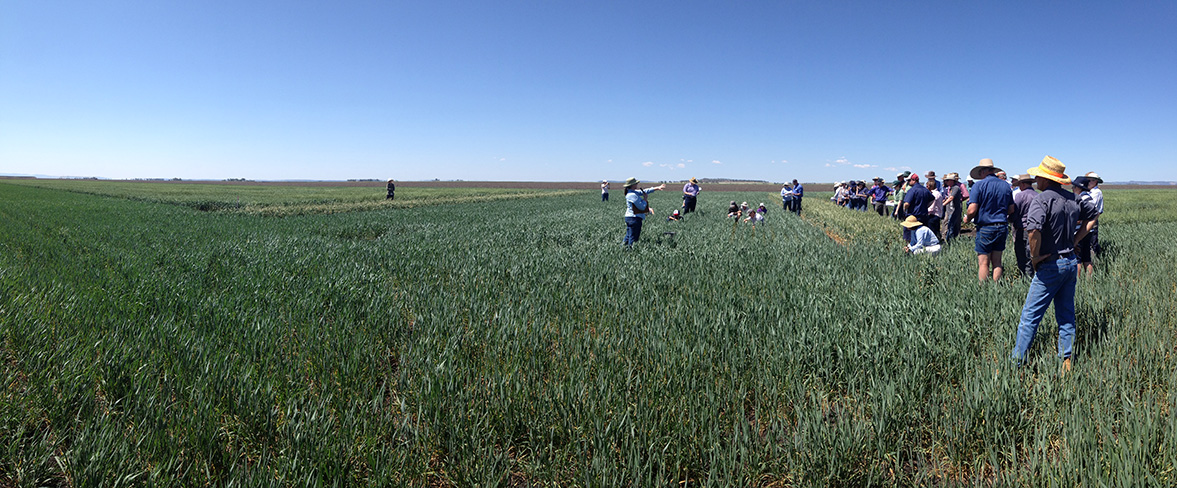By Adam Harper
It’s hard to imagine something so small having such a huge impact and yet grain crops and profit margins are slowly being eaten away, all from beneath growers’ very feet.
The culprit is root lesion nematodes. These microscopic pathogens live in the soil and each year, eat their way through an estimated $250-million worth of grain crops.

Kirsty Owen from Qld DAFF talks to a crowd of growers and consultants about current trials to find nematode tolerant and resistant varieties of wheat.
This tiny invader enters and causes damage to the root cells that results in lesions and reduced capacity to take up water. This in turn can cause wheat yield losses of up to 60% according to new research from CSIRO.
CSIRO Researcher, Dr Jeremy Whish, said: “A result of the reduced water uptake, is the wheat produces a much lighter canopy. This then reduces the plant’s ongoing demand for water, leading to a lower yield. Across hundreds of hectares, this can be devastating.”
So how can this microscopic invader be stopped?
That was the topic of a field day at Jondaryan near Toowoomba in Queensland recently where researchers from CSIRO, and QLD Department of Agriculture Fisheries and Forestry presented updates on managing for this miniscule menace.
“This site has had nematode trials in place for 30 years now and is helping to provide the industry with vital information around variety selection and how to manage for nematodes. The current trials are looking at what rotations are most effective for keeping nematode numbers down and what varieties offer the most resistance or tolerance,” said Jeremy.
View the video transcript.
For more information about nematodes and the recent field day, you can contact Jeremy Whish.

